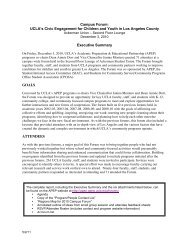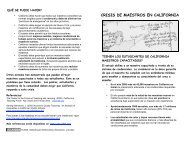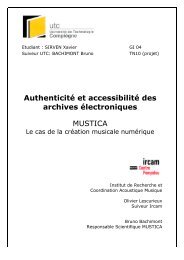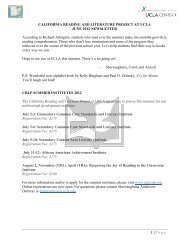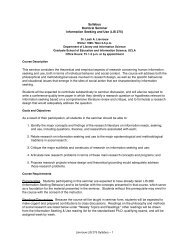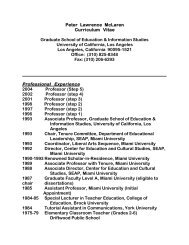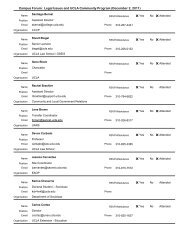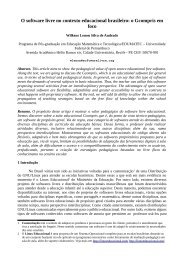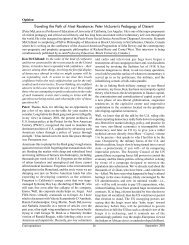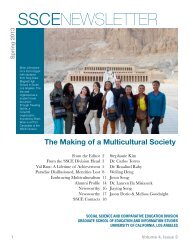1.1 From Digital Humanities to Speculative Computing - UCLA ...
1.1 From Digital Humanities to Speculative Computing - UCLA ...
1.1 From Digital Humanities to Speculative Computing - UCLA ...
You also want an ePaper? Increase the reach of your titles
YUMPU automatically turns print PDFs into web optimized ePapers that Google loves.
Early digital humanities is generally traced <strong>to</strong> the work of Father Busa whose<br />
Index Thomisticus was begun in 1949. xvii Busa’s scholarship involved statistical<br />
processing (the creation of concordances, word lists, and studies of frequency). His<br />
repetitive tasks were dramatically speeded by the au<strong>to</strong>mation enabled by computers.<br />
Other developments followed in stylometrics (quantitative analysis of style for attribution<br />
and other purposes), string-searches (on texts as sequences of letters), and increasingly<br />
sophisticated processing of the semantic content of texts (context sensitive analysis, the<br />
semantic web, etc..). xviii More recently, scholars involved in the creation of electronic<br />
archives and collections have established conventional approaches <strong>to</strong> metadata (as Dublin<br />
Core standard information fields for electronic documents), mark-up (the TEI, or Text<br />
Encoding Initiative), and other elements of digital text processing and presentation. xix<br />
This process continues <strong>to</strong> evolve as the scale of materials online expands from creation of<br />
digital reposi<strong>to</strong>ries (archives and collections), issues of access and display, <strong>to</strong> peer<br />
reviewed publishing, interpretative <strong>to</strong>ols, and other humanities-specific activities that<br />
take advantage of the participa<strong>to</strong>ry, iterative, and dynamic properties of electronic<br />
environments. The encounter of texts and digital media has reinforced theoretical<br />
realizations that printed materials are not static, self-identical artifacts and that the act of<br />
reading and interpretation is a highly performative intervention in a textual field that is<br />
charged with potentiality rather than existing in a fixed condition. xx One of the challenges<br />
we set ourselves was <strong>to</strong> envision ways <strong>to</strong> show this dramatically, in a visual<br />
demonstration, rather than simply <strong>to</strong> assert it as a critical insight.<br />
The technical processes involved in these activities are not simply mechanical<br />
manipulations of texts. So-called “technical” operations always involve interpretation,<br />
<strong>1.1</strong> His<strong>to</strong>ry / 3/2008 /<br />
28





